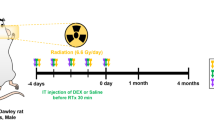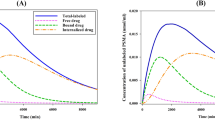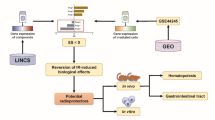Abstract
Creese and Maclagan have reported evidence that labelled decamethonium enters the fibres of striated muscles when the drug is injected into rats (preceding communication). It was found that this radioactivity is lost slowly from the muscles and can still be detected after days or weeks.
This is a preview of subscription content, access via your institution
Access options
Subscribe to this journal
Receive 51 print issues and online access
$199.00 per year
only $3.90 per issue
Buy this article
- Purchase on SpringerLink
- Instant access to full article PDF
Prices may be subject to local taxes which are calculated during checkout
Similar content being viewed by others
References
Taylor, D. B., Creese, R., Nedergaard, O. A., and Case, R., Nature, 208, 901 (1965).
Hodgkin, A. L., and Keynes, R. D., J. Physiol., 119, 513 (1953).
Jacobs, M. H., Ergebnisse der Biol., 12, 1 (1935).
Droz, B., and Leblond, C. P., Science, 137, 1047 (1962).
Creese, R., Taylor, D. B., and Tilton, B., J. Pharmacol., 139, 8 (1963).
Krnjevic, K., and Mitchell, J. F., J. Physiol., 153, 562 (1960).
Author information
Authors and Affiliations
Rights and permissions
About this article
Cite this article
TAYLOR, D., DIXON, W., CREESE, R. et al. Diffusion of Decamethonium in the Rat. Nature 215, 989 (1967). https://doi.org/10.1038/215989a0
Received:
Issue date:
DOI: https://doi.org/10.1038/215989a0
This article is cited by
-
Einfl�sse der Denervation von Muskelendplatten auf die Lokalisation der Acetylcholinesterase und die Bindung von Decamethonium
Naunyn-Schmiedebergs Archiv f�r Pharmakologie (1970)



